The Samsung 960 EVO (1TB) Review
by Billy Tallis on November 15, 2016 10:00 AM ESTSequential Read Performance
The sequential read test requests 128kB blocks and tests queue depths ranging from 1 to 32. The queue depth is doubled every three minutes, for a total test duration of 18 minutes. The test spans the entire drive, and the drive is filled before the test begins. The primary score we report is an average of performances at queue depths 1, 2 and 4, as client usage typically consists mostly of low queue depth operations.
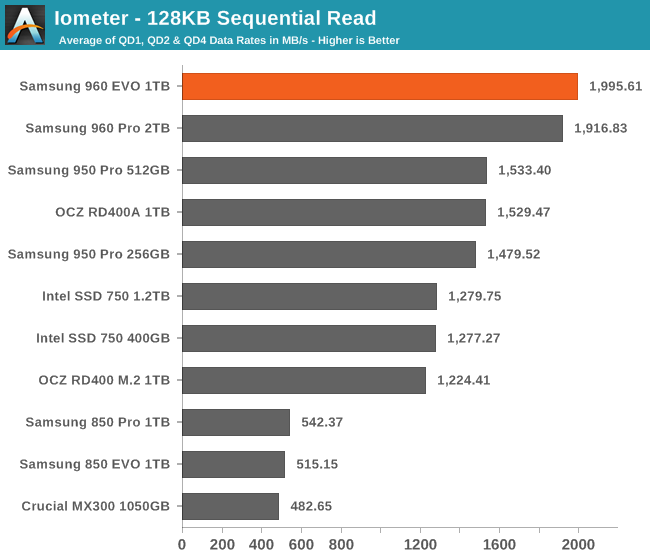
The 960 EVO provides slightly higher sustained sequential read speeds than the 960 Pro in a test where both are largely thermally limited. No other SSD comes close to offering this level of performance at low queue depths.
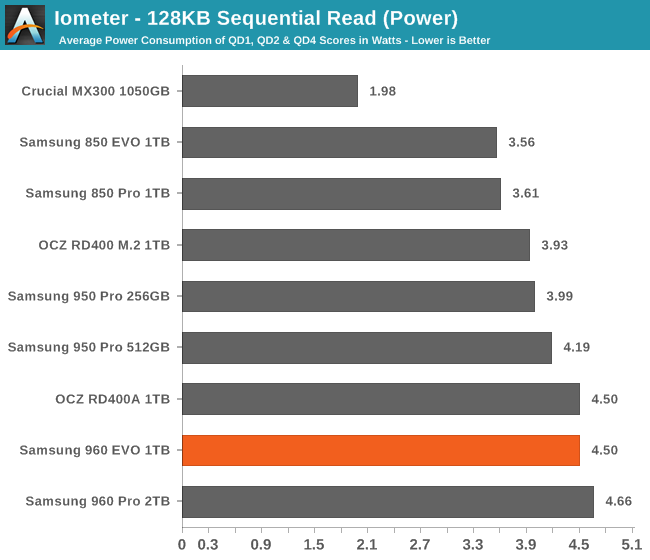
With power consumption slightly lower than the 960 Pro, the 960 EVO actually manages to set an efficiency record.
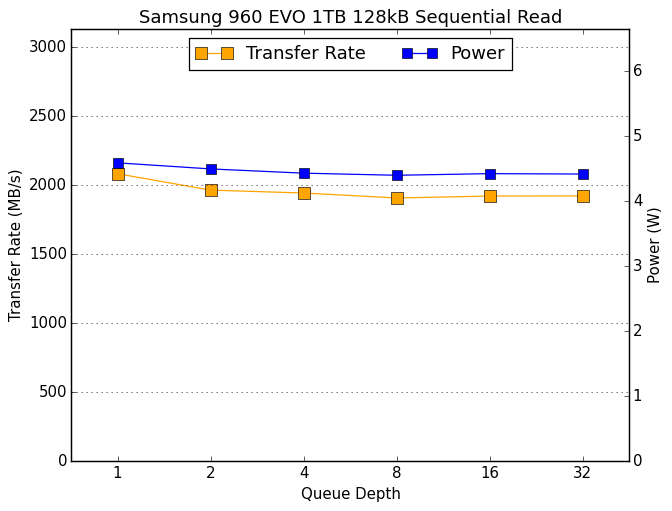 |
|||||||||
The competing drives that have large heatsinks can provide better performance at higher queue depths, but within the constraints of the M.2 form factor Samsung has a huge advantage.
Sequential Write Performance
The sequential write test writes 128kB blocks and tests queue depths ranging from 1 to 32. The queue depth is doubled every three minutes, for a total test duration of 18 minutes. The test spans the entire drive, and the drive is filled before the test begins. The primary score we report is an average of performances at queue depths 1, 2 and 4, as client usage typically consists mostly of low queue depth operations.

The sustained sequential write speed of the 960 EVO is far slower than the 960 Pro and several of the better-cooled competitors, but the 960 EVO is actually slightly faster than last year's 950 Pro.
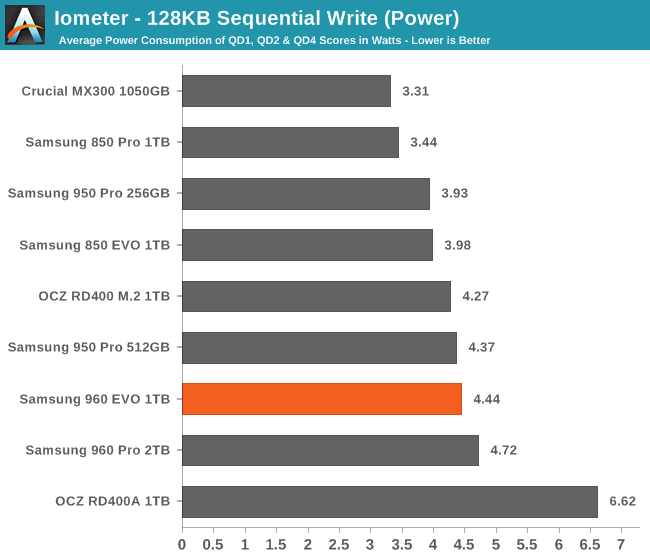
The 960 EVO doesn't break any records for power efficiency, but only because the 960 Pro exists. The MLC-based competition is less efficient than the TLC-based 960 EVO.
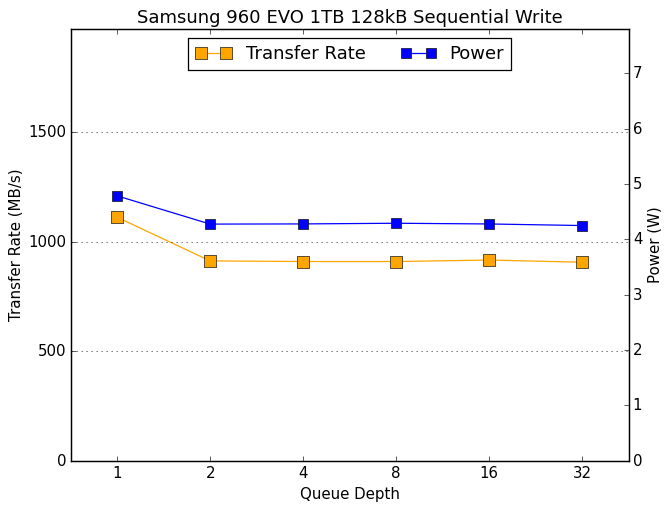 |
|||||||||
For almost all of the sequential write speed test, the 960 EVO is thermally limited, but it is clearly able to do much more within that limit than the 950 Pro or OCZ RD400 could.










87 Comments
View All Comments
Eddie Goodie - Sunday, November 20, 2016 - link
It seems these drives are delayed because of NAND shortage. But what about the driver and the Magician software ? There is a lack or delay of some kind? If these items work and benefit former models, I see no reason for this delay after delay. Needless to say they play in my decission to buy a 960Pro when available, I'll wait for some advances here. Very dissapointing.hvar - Monday, November 21, 2016 - link
Where are the RAIDs? I want a RAID-5 enclosure with 5 of these drives with Thunderbolt 3 connector for video editing. Why does all RAID-enclosures still use SATA?Beany2013 - Tuesday, November 29, 2016 - link
Because no bugger is making anything other than SATA/SAS RAID cards so far.I'm sure they'll come along, but they're taking their bloody time about it.
Chad - Saturday, December 3, 2016 - link
Dat Optics been making them for awhile now. Thunderbolt 1, 2 & 3 enclosures. I use one. It flies!Meteor2 - Wednesday, November 23, 2016 - link
Is there going to be an 860 line from Samsung, or is SATA maxed out?JJWV - Wednesday, November 30, 2016 - link
"As is normal for Samsung's EVO lines, the usable capacities are a bit smaller, with the 1TB EVO being 1000GB instead of 1024GB."It is norma for the whole world except Microsoft and some others : 1 TB is 1000 GB, just like 1TW is 1000 GW. (On the other hand 1 TiB is 1024 GiB notice the "i" between the T and the B ?)
haybat - Saturday, May 13, 2017 - link
so, this is MLC or TLC NAND drive? because all of samsung datasheet claimed that 960 Evo is using MLC NAND.